What was Abdallah Azzam role in modern Islamist terrorism? Listen to my chat with Norwegian scholar Thomas Hegghammer on his new book on the jihadi ideologue.
Author: Phil Gurski
Phil Gurski is the President and CEO of Borealis Threat and Risk Consulting Ltd. Phil is a 32-year veteran of CSE and CSIS and the author of six books on terrorism.
Terrorists want to instill fear and there is nothing scarier than a biological attack. But how realistic is it?
The Hillcrest Bar bombing, also known as the Saint Patrick’s Day bombing, took place on 17 March 1976 in Dungannon. The Ulster Volunteer Force detonated a car bomb outside a pub crowded with people celebrating Saint Patrick’s Day.
In this Quick Hits podcast, Phil Gurski explains why we must refrain from using military terminology during the coronavirus crisis.
Canada is proudly a land of many nations, but sometimes homeland conflicts come to roost.
On this day in 1978, the Brigade Rosse kidnapped former Italian Prime Minister Aldo Moro. Less than two months later, his bullet-riddled body was found in the back of a car in the centre in Rome.
On this day in 2019, Australian citizen Brenton Tarrant, carried out attacks on two mosques in Christchurch that resulted in the deaths of at least 50 people.
COVID-19: An opening for terrorists?
Even ISIS is afraid of COVID-19, suggesting we may not see an uptick in attacks seeking to take advantage of a possible skeleton crew in security and intelligence agencies – read more here!
On this day in 2016, a man was arrested after walking into a Canadian Forces recruiting office in Toronto and allegedly stabbing two Forces members.
I am uncertain what GBA+ analysis entails but I am willing to give proponents the benefit of the doubt – for now.
